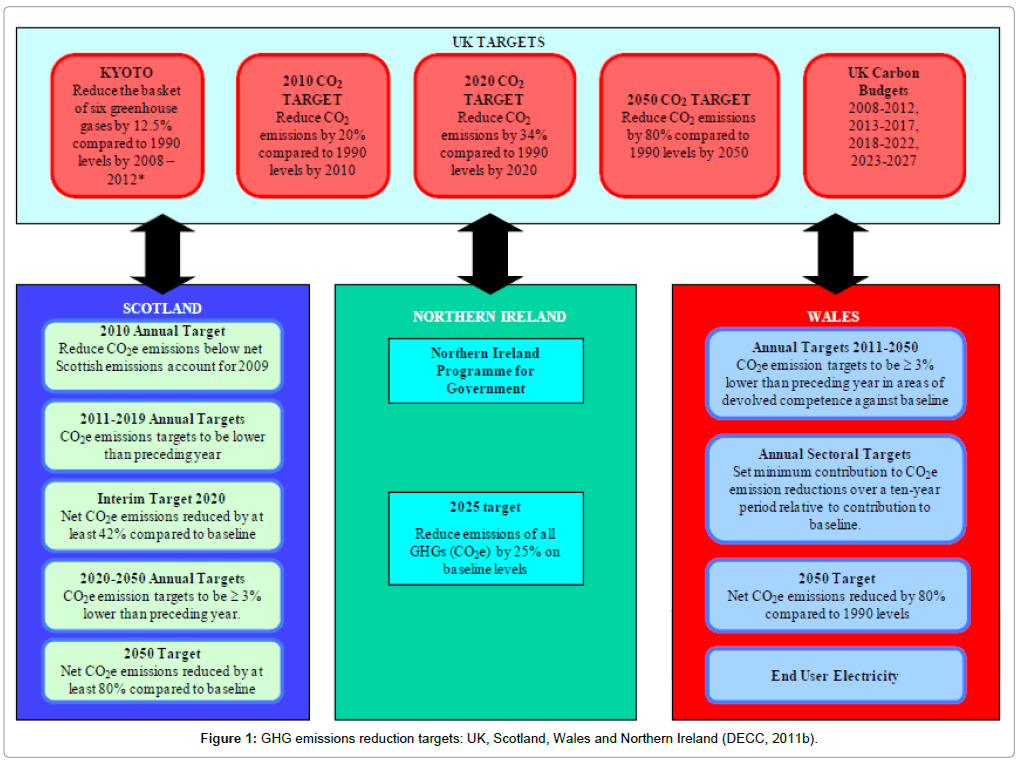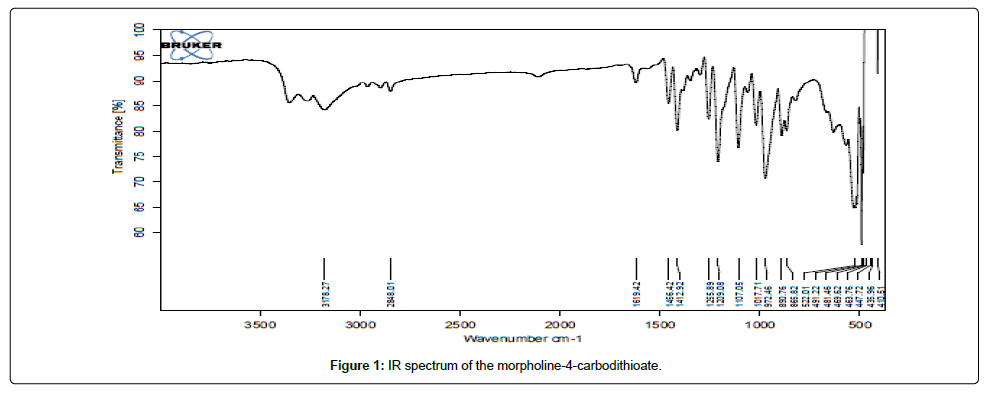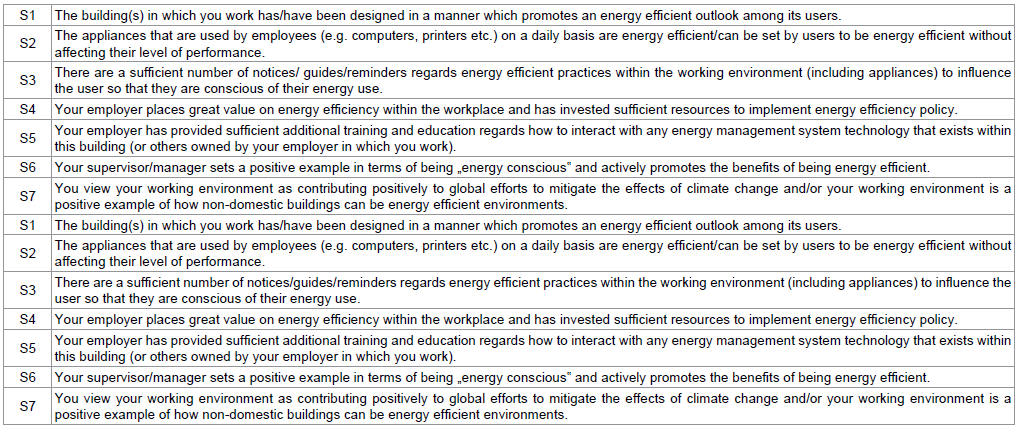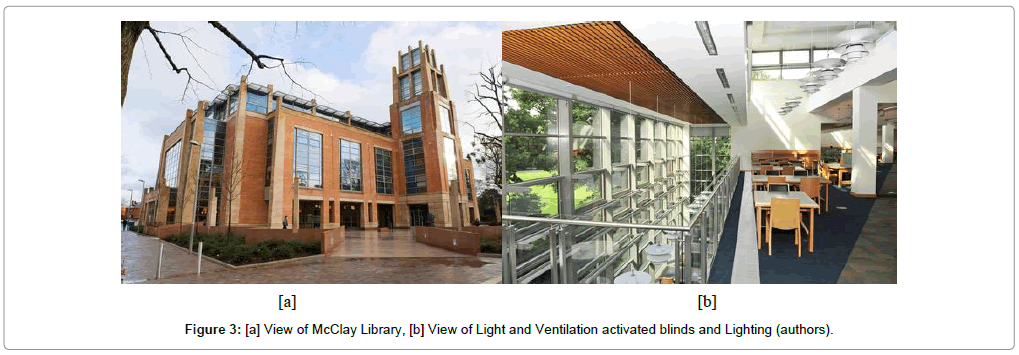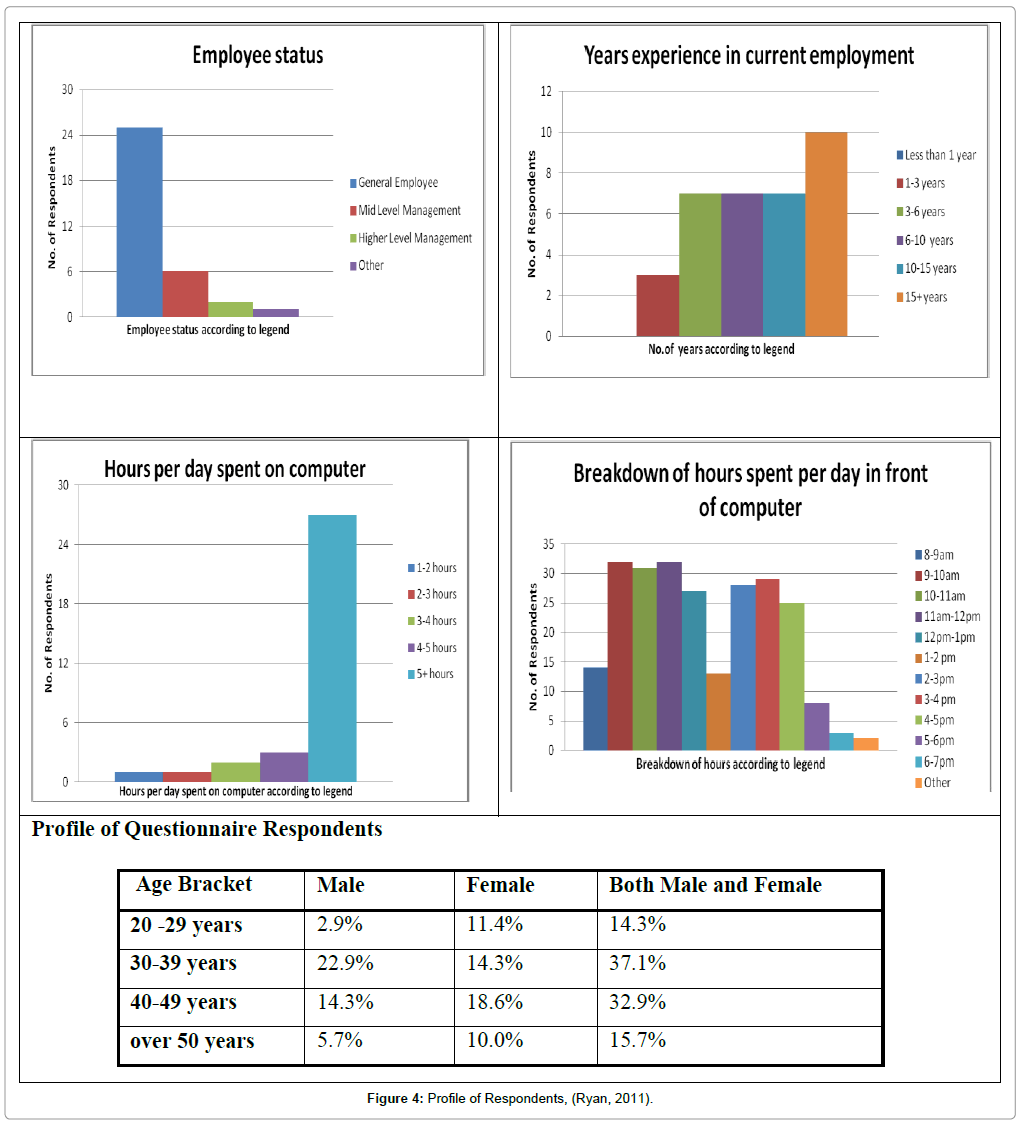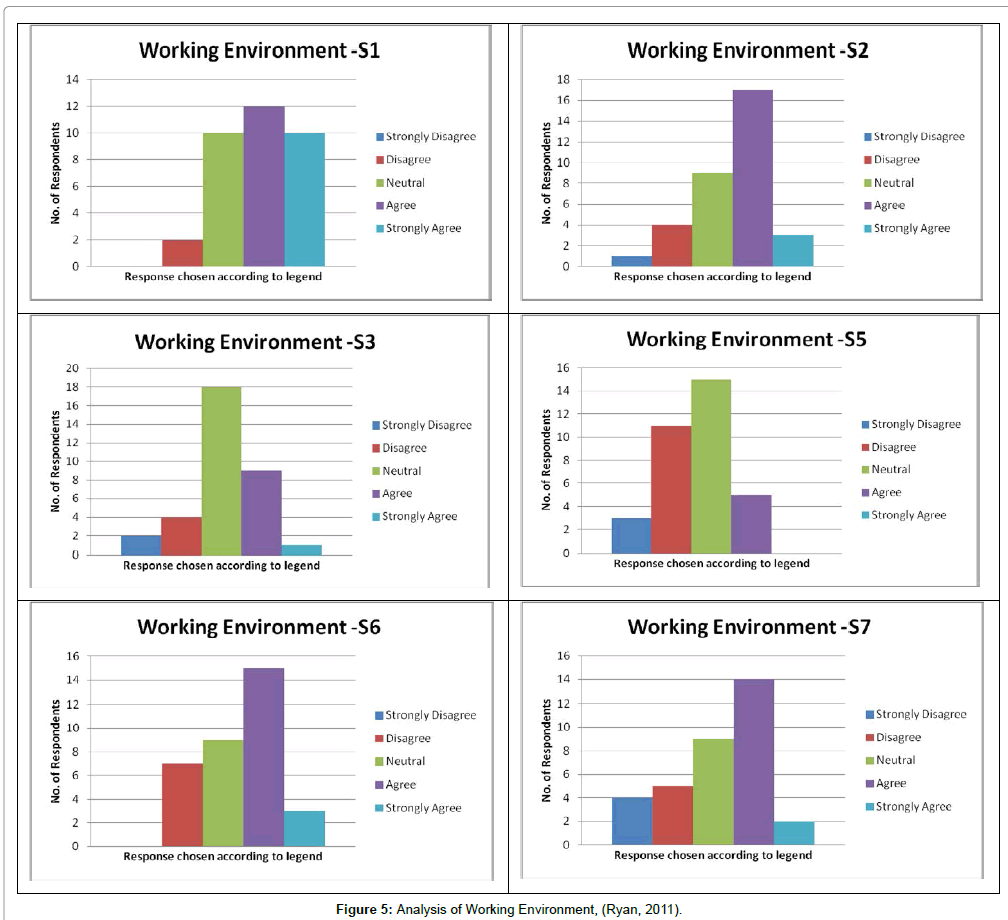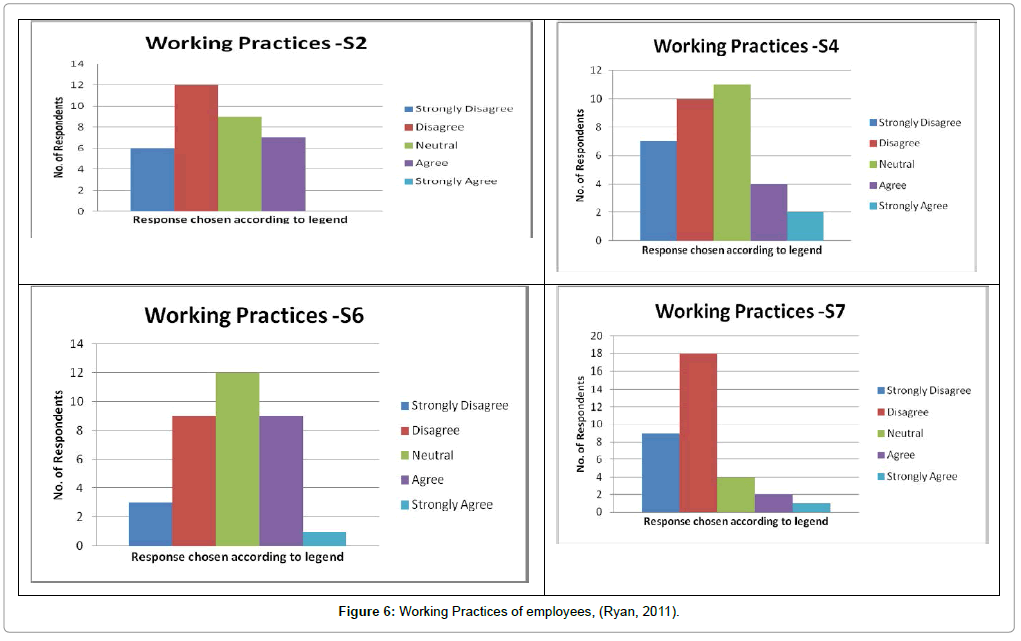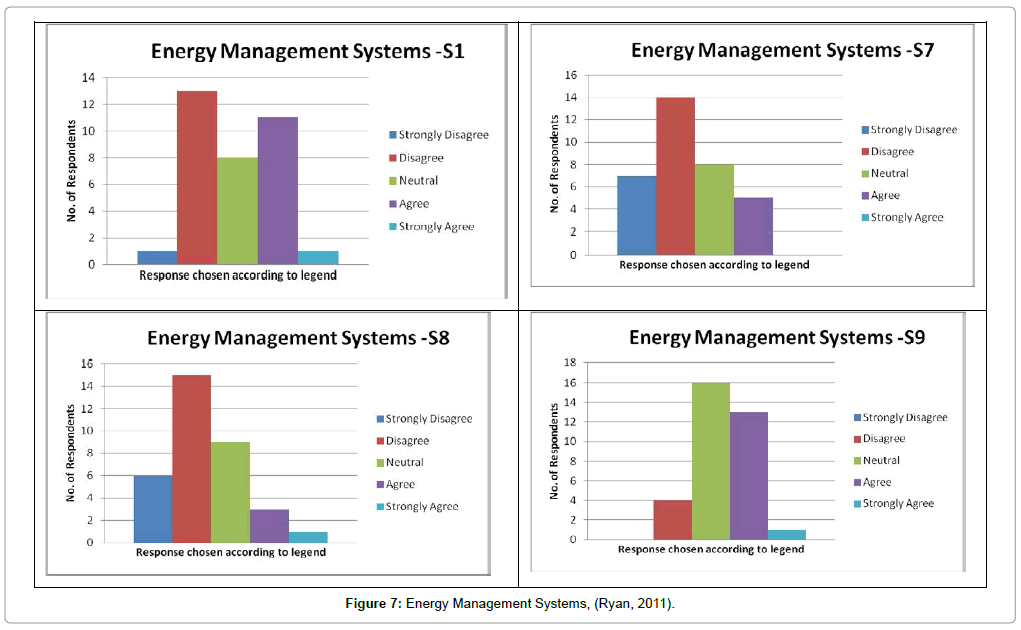Impact of User Behavior in Office Building on Energy Reduction Strategies
Received: 26-Jul-2014 / Accepted Date: 25-Nov-2014 / Published Date: 02-Jan-2015 DOI: 10.4172/2090-5009.1000112
Abstract
There has been a lot of emphasis placed on the assessment of energy use in buildings as a means to the reduction in CO2 emissions. Smart meter technology that captures and displays not only the energy usage but also the quality of indoor environment are currently used widely within the UK, however, there exists a disconnection between the energy management systems (EMS) technology and the user behavior that could potentially affect the consumption profile. This study was carried out in Northern Ireland and revealed that energy data was hardly shared with the users, which affected their energy conservation strategies.
Keywords: Energy management system; Sustainability; Carbon dioxide emissions; Energy usage; User profile; Northern Ireland
17665Introduction
Over the last couple years there has been interests in the creation of a Low carbon Society (LCS). The concept of Low Carbon Society, (LCS) first appeared in use in Japan in 2007 to mean one that aspires to make an equitable contribution to the global effort of reducing greenhouse gases to a safe level combining both a high level of energy efficiency and security [1]. Prior to the use of the LCS concept the UK government had published an Energy White Paper “Our Future Energy: Creating a Low-Carbon Economy” (DTI, 2003) [2] that argued for a strategy of achieving more economic outputs and better quality living standards, that results in less environmental pollution and minimizes the use of natural resources. Strachan, Foxon & Fujina, [1] point out LCS could be achieved through the choice of use of low carbon technologies and changes to social models and lifestyles that target energy efficiency and requires consumer responses, very much similar to those in the DTI white paper of 2003.
In practical terms, the emphasis on the assessment of energy use in buildings as a means to the reduction in CO2 emissions is one of the outcomes of LCS strategy. Smart meter technology that captures and displays not only the energy usage but also the quality of indoor environment are currently used widely within the UK, however, there exists a disconnect between the energy management systems (EMS) technology and the user behavior that could potentially affect the consumption profile, which is another important strategy of the LCS concept.
The United Kingdom, UK is a signatory to the Kyoto Protocol and has made great efforts towards the targets set under the Protocol post 2012. The Climate Change Act (2008) [3] proposes to lower net Green House Gas, GHG emissions by 80% or less by the year 2050 based on 1990 baseline levels. Figure 1, illustrates the respective GHG emission reduction targets for the UK as a whole and the sub targets for Scotland, Wales and Northern Ireland respectively (DECC, 2011b) [4].
The initial estimates of GHG emissions for 2009 and 2010 as indicate notable reduction of 28.3% from the baseline and are indicative of possible targets being met, in the meanwhile, over the same period there was a reduction in CO2 emissions of 19.4% as indicated in Figure 2 above.
Energy efficiency in non-domestic buildings
Literature review reveals that there are 1.8 million non-domestic buildings in the UK contributing an estimated 17% of the total emissions (UKGB, 2011) [5] and the Carbon Trust (2009) [6], argue that it is possible to achieved 70-75% reduction in CO2 emissions of by 2050 at minimal or zero net costs if systems that employ intelligent metering were in place. They however, ignore the impact of occupier behavior and control related issues, a view supported by Bordass et al. [7], Steemers and Manchanda [8] who found out that actual energy demands in office buildings are typically significantly higher than modeled and the annual CO2 emissions are often two to three times the expected values (Figures 1 and 2) [9].
The UK government set in place a roll out schemes for smart meters from 2014 to 2019 for both domestic and non-domestic buildings, despite the fact that the there is dearth of research on feedback on their impact on building performance in use as aptly pointed out by Stevenson & Leaman:
“…it makes it difficult to ascertain whether targets are being achieved in reality, whether the design, procurement, and management strategies are actually working and whether occupants are actually reducing their demands and expectations (particularly in relation to so-called ‘efficiency gains’)…” (2010, 437)
Darby [10] agrees and pointed out that primary cause of much of energy wastage was the invisibility of its consumption and that consumer behavior could be affected by effective feedback that included support in both interpreting the information as well as advice on the what to do with it. It is estimated that this is likely to result in reductions in the range of 5-15% however; other studies have shown that there is a distinct decrease in level of energy savings that was originally made after a few months if habits are not formed [11].
Consumer behavior is affected by culture; for example, a study by Isaacs, Saville-Smith, Camilleri and Burrough [12] in New Zealand indicated that people there are comfortable living in rooms with lower temperatures in comparison to other parts of the world. Another study of the high performances residential development by Ajzen [13] revealed that behavior had a significant impact on resource consumption within same housing type; suggesting that more attention needs to be given to behavior in comparison to intelligent physical systems than is currently done. Gram-Hanssen [14] concur pointing out that energy consumption in two different housing of same type and size can vary by up to three times or more, thus pointing to user behavior as ultimate game changer beyond efficient fabric.
Metering technology and EMS
The importance of the quality of feedback cannot be understated and it forms part of good management practices and structure within any organization and are critical in influencing positive energy usage behavior (TSB, 2009; MBEKTN, 2010) [15,16]. There are several metering technologies that have been adapted to measure energy usage in buildings, including a sub meter, an advanced meter and a smart meter. The first is normally location based and is used to obtain part of total energy load of the building; the second are placed in building but read remotely and at frequent intervals and can be placed within the main meter or sub meters with the capability to store and transmit readings every half hourly. The last type, the smart meters, allow for two way communication between the utility company and the consumer building, unlike the first two that are one way communication tools hence, is an intelligent metering technology. Sub-metering technology is cheaper, easy to use and allow for good energy management to take place and could potentially contribute to positive behavioral change of the users of the zone where energy is read if feedback is shared appropriately.
Research Methodology
This paper examines the use of existing sub metering technology in attempt to increase energy efficiency in a non-domestic building environment and whether the data gathered was used to effectively impact positively on the behavior of the energy user. Mixed methodology was used to evaluate data gathered from semi-structured interviews with three professionals involved with the design and control of the energy management system and another questionnaire that was distributed to the users at the case study building. The questionnaire was based on Likert scale, giving the respondents five options to pick from in relation to the issues of feedback from sub-metering energy technologies in the building. The questions were arranged under three themes; working environment, working practices and Energy Management system as indicated in (Tables 1a-1c).
Case Study: McClay Library at Queens University Belfast
The £50 million McClay Library at Queens University Belfast was opened in 2009 and is located on the environs of the scenic Botanic Park on the University’s main campus, it is a four-story structure with a floor plan of 17,400 m2. It was the winner of the Most Sustainable Building in the 2010 Royal Institute of Chartered Surveyor’s (RICS) Awards Scheme. In addition, significant capital investment was spent with the intention of producing energy efficient building that included Building Management System controlled window openings to provide natural ventilation, and window blinds that work in tandem with the lighting controls adapted according to available daylight (Figure 3).
Monitoring energy usage in the building is a key component in maintaining an efficient operational building environment with energy use target set within 140 kWh/m2/annum and emission of less than 1007 tons of CO2/per year. The building has sub metering technology to monitors gas and electricity consumption at quarter-hour intervals allowing the building manager to assess whether the building was on course to meeting the targets. In addition, the data center within the McClay is sub metered separately due to the large number of highenergy demand computer processes and other plant and hardware equipment (RICS, 2010) [17].
The metering data combined with the “footfall” i.e. number of people within the building at any one time, allows the identification of direct links between user behavior and energy usage allowing for opportunities to reduce energy load. A strategic response to this is the limiting of the opening hours on certain floors of the library or reducing the number of computers in operation at any one.
Results
Detailed results of the questionnaire, issued to employees in the case study building, are available on request and displayed here are the breakdown of responses with respect to each statement contained within the questionnaire. The following pages display figures detailing the breakdown of data gathered from respondents in the McClay library, with respect to the structure of the questionnaire. The first selection of graphs, seen in Figure 4 details the breakdown of characteristics of employees in the McClay library, including status of employee, years experience in current position and time spent in front of a computer screen each day.
The sample consisted of 237 questionnaires were sent via email and followed up with hard copies to workers in the Administration Building and 70 responses were received. The questionnaires targeted women and men over 18 years of age, but did not collect data on income of respondents, as most people are typically not willing to disclose this or would lie. The breakdown of respondents is as given in Figure 4 above. The data was gathered over a 4-week period .The interviews focused on a set of 26 questions. The data collected through questionnaire surveys had numerical value. The data was entered and analysed using Statistical Package for Social Sciences: SPSS. This application helped to conduct a classic analysis by using descriptive analysis and associated selection techniques. The goal was to use a descriptive and correlation analysis to study relationship between variables.
Figure 4 above, revealed that the most employees (79.4%) employees spend in excess of 5 h on their computers each day, in addition, the vast majority of the respondents used the computers between the times of 9 am-1 pm and 2-5 pm. Figure 3a and 3b revealed that most employees regarded the library as designed and built to promote energy efficiency to users as well as were felt that the electrical appliances they used daily were energy efficient. However, when asked if there was sufficient notices/ guides or reminder on best energy efficient practices that would influence their behavior almost twothirds (70.58%) were not convinced a stack reminder of importance of appropriate feedback system (S3). Further examinations of the attitude to energy efficient practice (S6) revealed that there was mixed attitude towards feedback from employer. Equally when asked if the working environment contributed positively towards global efforts in militating against climate change, (S7), almost half (52.94%) were not convinced with the effort by the employer. It suggests that the investments in use of high technology and costs may not have had the desired effect (Figure 5).
Figure 6 below are results from data on Working Practices and they reveal interesting characteristics. When respondents were asked if they were given sufficient updated by their supervisor/ manager regarding how any changes in their working practices impacted the energy demand on the building (S2), 52.94% strongly disagreed or disagreed and when this was added to those unsure, the it revealed that almost four-fifths (79.41%) thought the feedback was insufficient to impact their behavioral practices. In addition, it revealed that half (50%) thought that energy consciousness was not instilled or required of them in comparison to only 17.64%. Most employees also felt that there was a big difference between them and the managers with regard to energy efficient practices (S6), and that most employees (79.41%) individually lacked the motivation to be energy efficient (Figure 7).
The focus of the UK government with regard to reduction in energy use and climate change emissions has been on physical and intelligent systems with less emphasis on human behavior. Table 1 shows interesting attitudes and beliefs of the users of a building that has won awards as most energy efficient building yet so far reveals otherwise. It revealed that only a third (34.29%) was familiar with energy management system and how it affected their energy use within the building. Literature review consistently pointed to importance of feedback on energy use in buildings, (Figure 7-S7 and 7-S8) revealed that when respondents were asked if the management presented them with energy use data; almost two thirds, 61.76%, disagreed or strongly disagreed. In addition only one tenth, 11.76% have ever received the data communicated to them in visual or other easily understood methods. Most respondents 58.88%, regarded failures in energy management systems as caused by ineffective interaction between humans and the technology [18].
Conclusion
The work examined the use of sub metering technology with aims of reducing energy use in the building and whether its use affected user behavior. It revealed firstly, that most users who spent most of their working day in the building were not familiar with the workings and benefits of the EMS technology. However, most revealing was the fact that the users of the energy in the building were not provided with feedback and when provided it was not in a user friendly and understandable manner that would affect their working practices or behavior. There was no attempt by the management to communicate and support or reinforce what would have emerged as best practices working behavior that reduced energy consumption, in addition, the employees lacked the motivation to change their behavior to be more energy efficient. The analysis further revealed that there was underlying lack of involvement of the employees in the decisions about the investment in energy efficient technologies, and the importance of changes to their working practices. The decision by the institution to invest in an “energy efficient” building seems to have stemmed from responses to future changes that were coming to the building regulations and also in attempt to shore “corporate responsibility.” If there were any reduction in energy consumptions and CO2 emissions, it is difficult to attribute them to occupants actually reducing their demands and expectations (particularly in relation to so-called ‘efficiency gains’) as pointed out by Stevenson and Leaman [11].
References
- Strachan N, Foxon T, Fujina J (2008) 'Modeling Long Term Scenarios for Low-Carbon Societies', Special Issue of Climate Policy.
- DTI, UK (2003) Energy white paper: Our energy future-creating a low carbon economy. London: The Stationary Office (TSO).
- Climate Change Act (2008) London: The Stationary Office Limited, Her Majesty’s Stationary Office, UK.
- Department Of Energy And Climate Change, DECC (2011) Greenhouse Gas Inventories for England, Scotland, Wales and Northern Ireland: 1990-2009, London: Department of Energy and Climate Change
- United Kingdom Green Building Council, UKGBC (2011) Carbon Reductions in Existing Non-Domestic Buildings-March 2011, London: United Kingdom Green Building Council
- Carbon Trust (2009) Building the future, today-Transforming the economic and carbon performance of the buildings we work in, London: The Carbon Trust
- Bill Bordass, William Bordass Associates Robert Cohen, Energy for Sustainable Development Ltd, John Field, Target Energy Services Ltd (2004) Energy performance in non-domestic buildings: closing the credibility gap. Paper presented at the Building Performance Congress 2004, Frankfurt, Germany.
- Steemers Keon, Manchanda Shweta (2010) ‘Energy efficient design and occupant well-being: Case studies in the UK and India’, Building and Environment, 45: 270-278.
- Norford Leslie Keith, Socolow Robert, Hsieh E, Spadaro Joseph (1994) Two-to-one discrepancy between measured and predicted performance in a ‘low energy’ office building: insights from a reconciliation based on the DOE-2 model, Energy and Buildings, 21: 121-131.
- Darby, Sarah (2006) The Effectiveness of Feedback on Energy Consumption: A Review for Defra of the Literature on Metering, Billing and Direct Displays. Environmental Change Institute, University of Oxford.
- Stevenson Fionn, Leaman Adrian (2010) Special Issue: Housing occupancy feedback: linking performance with behavior, Building Research and Information, 38: 5.
- Isaacs Nigel, Saville-Smith Kay, Camilleri Michael, Burrough Lisa (2010) Energy in New Zealand House: Comfort, physics and consumption, Building Research & Information, 38: 470-480.
- Ajzen Icek (1985) From intentions to actions: A theory of planned behavior. In Kuhi, Julias & Beckmann, Jurgen (Edn.), Action. Control: From cognition to behavior, Heidelberg: Springer.
- Gram-Hanssen, Kirsten (2010) Introducing and Developing Practice Theory: Towards a Better Understanding of Household Energy Consumption, Proceedings of Linköping Electronic Conference, and Linköping, Sweden: Linkoping University Press, 45-58.
- Technology Strategy Board (2009), User-centred design for energy efficiency in buildings, Swindon, UK: Technology Strategy Board.
- Modern Built Environment Knowledge Transfer Network, MBEKTN (2010) User Behavior in Non-domestic Buildings, Oxford, UK: University of Oxford
- Royal Institute Of Chartered Surveyor’s, RICS (2010), Scheme Report-McClay Library, London: Royal Institute of Chartered Surveyor’s, Royal Institution of Chartered Surveyors.
- Ryan Ciaran (2011) ‘An investigation into methods to facilitate more effective use of sub metering data and technology in non-domestic buildings’, Unpublished MSc thesis, Queens University Belfast.
Citation: Onyango J, Ciaran R (2015) Impact of User Behavior in Office Building on Energy Reduction Strategies. Innovative Energy Policies 4: 112. DOI: 10.4172/2090-5009.1000112
Copyright: ©2015 Onyango J, et al. This is an open-access article distributed under the terms of the Creative Commons Attribution License, which permits unrestricted use, distribution, and reproduction in any medium, provided the original author and source are credited.
Select your language of interest to view the total content in your interested language
Share This Article
Recommended Journals
Open Access Journals
Article Tools
Article Usage
- Total views: 16436
- [From(publication date): 2-2015 - Aug 30, 2025]
- Breakdown by view type
- HTML page views: 11720
- PDF downloads: 4716

